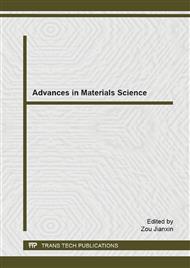p.672
p.676
p.680
p.686
p.690
p.697
p.701
p.706
p.711
Poisson’s Ratios for Wood Species for Structural Purposes
Abstract:
The broader knowledge about physical and mechanical properties of wood allows reliable timber structures design. Even little addressed in the literature, in several situations Poisson's ratios are required for the evaluation of stresses acting on structural elements. This study aimed to obtain values of Poisson's ratios (ν), plans Longitudinal-Radial (νLR) and Longitudinal-Tangential (νLT), for species Peroba Rosa (Aspidosperma polyneuron) and Jatobá (Hymenaea courbaril L.). For this purpose, forty samples Peroba Rosa and eight samples of Jatobá were prepared for testing in compression parallel to the grain, following the recommendations of ABNT NBR 7190 standard. The results of means confidence intervals, considered at the level of 5% significance, revealed that the Poisson's ratios νLR e νLT to Peroba Rosa are 0.27 and 0.42, respectively, and 0.25 and 0.43 to Jatobá.
Info:
Periodical:
Pages:
690-693
Citation:
Online since:
February 2015
Keywords:
Price:
Сopyright:
© 2015 Trans Tech Publications Ltd. All Rights Reserved
Share:
Citation:


